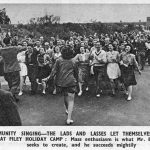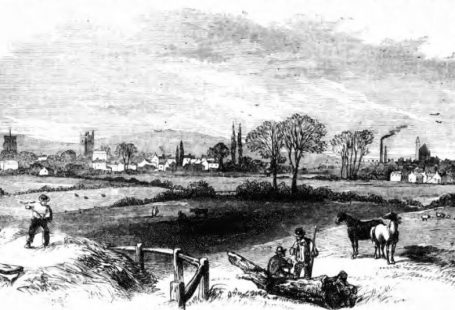‘What Pompeii was to the Romans…Brighton is to Londoners,’ comments an article on the famous British seaside town in the Penny Illustrated Paper, 10 August 1889. Using articles, photographs and illustrations from The Archive, in this special blog we will take a look at the history of this ‘Queen of Watering-places,’ from its establishment as a health resort in the eighteenth century, its growth as a fashionable destination thanks to the Prince Regent, to its railway heyday, and its infamous twentieth century seediness.
Penny Illustrated Paper | 10 August 1889
The same article in the Penny Illustrated Paper describes how ‘As far back as 1736 we find [Brighton] described by an enthusiastic chronicler as ‘one of the principle places in the kingdom.’’ But why was this? The paper attributes the town’s ‘beautiful and healthy situation, and atmosphere of wonderful crispness and purity, which is nearly always saturated with sunshine’ to its early popularity.
Eighteenth century physician Richard Russell came to recommend Brighton for a very specific reason – its health benefits. Russell ‘sang the praises of sea-water very loudly,’ and published a work named A Dissertation on the Use of Sea-Water in the Diseases of the Glands. Thus, the town grew in popularity as it became a destination for those seeking a cure in its climate and its waters.
This draw continued well into the twentieth century. A bulletin in the London Evening Standard describes how the current monarch – King Edward VII – had seen a ‘benefit’ in his health from visiting Brighton in the winter of 1908. An advertisement in the West Sussex Gazette in 1923 lauds ‘Brighton for Health and Pleasure all the Year Round’ – and so now it was not just kings and princes that could reap the benefits from a Brighton cure – it was everybody.
Illustrated London News | 8 January 1927
And indeed, Brighton embodies this fascinating juxtaposition between health and pleasure. Visitors would flock to the town for a ‘rest cure,’ such as the one Edward VII took in 1908, but many flocked to its beaches for pleasure. Indeed, another royal had much to do in establishing the town’s hedonistic reputation: the Prince Regent, later George IV, who built the ornate Brighton Pavilion in the town.
And with the opening of the railways, Brighton became a popular destination: ‘The London, Brighton and South Coast Railway has done a hundred times more to develop Brighton than Dr Russell and George IV,’ claimed the Penny Illustrated Paper in 1889.
Illustrated London News | 16 November 1872
With this influx of visitors, and its proximity to the capital, Brighton became known as ‘London-by-the-Sea.’ Illustrations from the 1870s show a beach crowded with visitors, and instead of appearing like a seaside idyll, the town seems like an extension of the urban sprawl.
Illustrated London News | 23 April 1870
Nowhere is this more apparent than in two fascinating illustrations published a month apart in the The Sphere. The earlier sketch, published in June, shows ‘a typical scene on Brighton beach.’ This is veritably London-by-the- Sea – bustling and filled with all types of humanity. But a month later, the same newspaper published a whimsical depiction of ‘sea bathing at an English watering-place,’ this watering-place being Brighton.
Here, bathing huts touch the sea, and an old fisherman rows bathers out for a swim (although in 1929, according to The Sphere, bathers and fishermen were up in arms, both claiming each other to be a nuisance). It is nothing short of paradise.
But with its popularity came pitfalls. Crime became more common – with the notorious Brighton trunk murders splashed across newspaper headlines in the 1930s. The Yorkshire Evening Post, 16 July 1934, reports that ‘another body was discovered in a trunk at Brighton yesterday.’ This followed on from an earlier discovery of female’s torso in a trunk at a Brighton railway station.
Graham Greene famously captured the seediness of the seaside resort in his novel Brighton Rock, which follows ruthless seventeen-year-old gangster Pinkie. The Sketch, 21 January 1948, describes the ‘sleazy mean lodging-houses and narrow streets behind the front in the holiday season’ that make up the setting of both film and novel.
The ‘visual savagery’ of the work is at odds with the popular image of Brighton as a fun and family-friendly destination. However, the reputation of the town as a place for pleasure survived such connotations. Lord Kilbracken, in a 1962 article for the Tatler entitled ‘Return to Brighton’ writes how to him, as a child, ‘Brighton offered all the delights in the world.’
Returning years later, he was ‘delighted…to find it exactly as I recalled it:’
There were the same clairvoyants, the same purveyors of jellied eels and whelks, the same sailing boats and sandcastles…The same trippers were wearing the same funny hats and the same speedboats gave joy-rides.
You can discover more about Brighton by searching in our Archive – filtering by date and article type to find out more about the early days of the resort.














